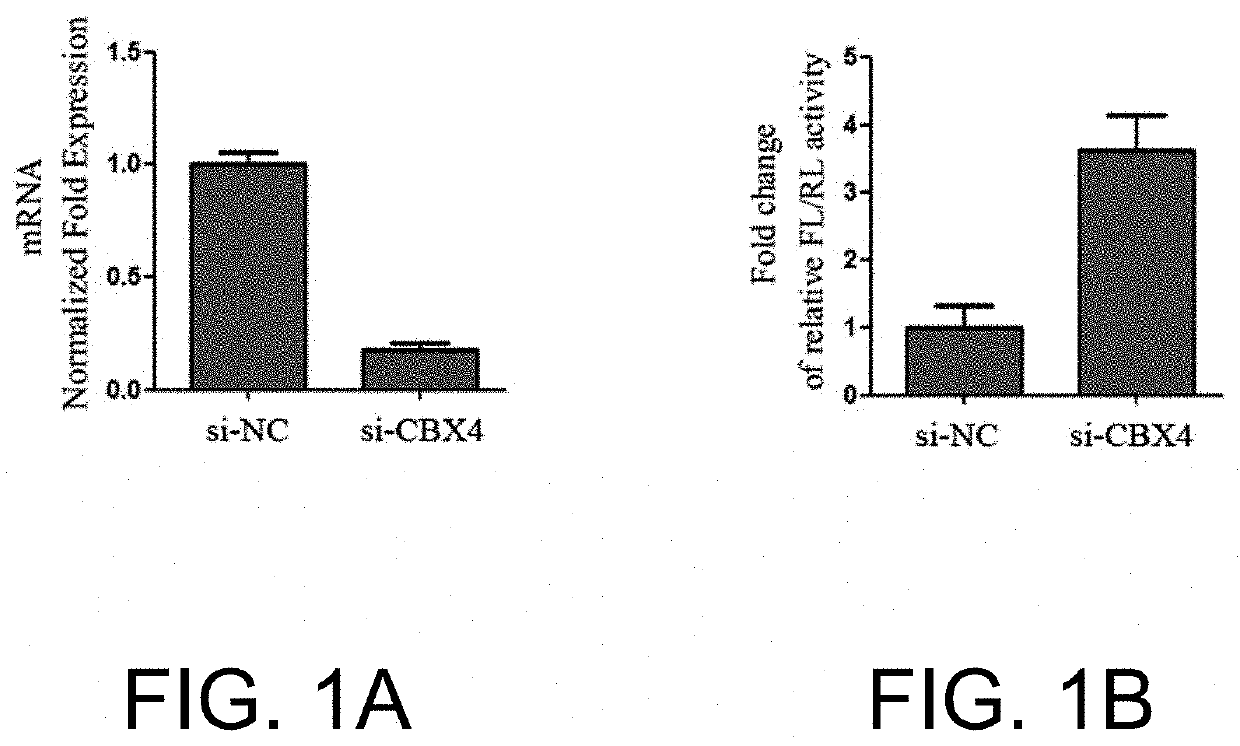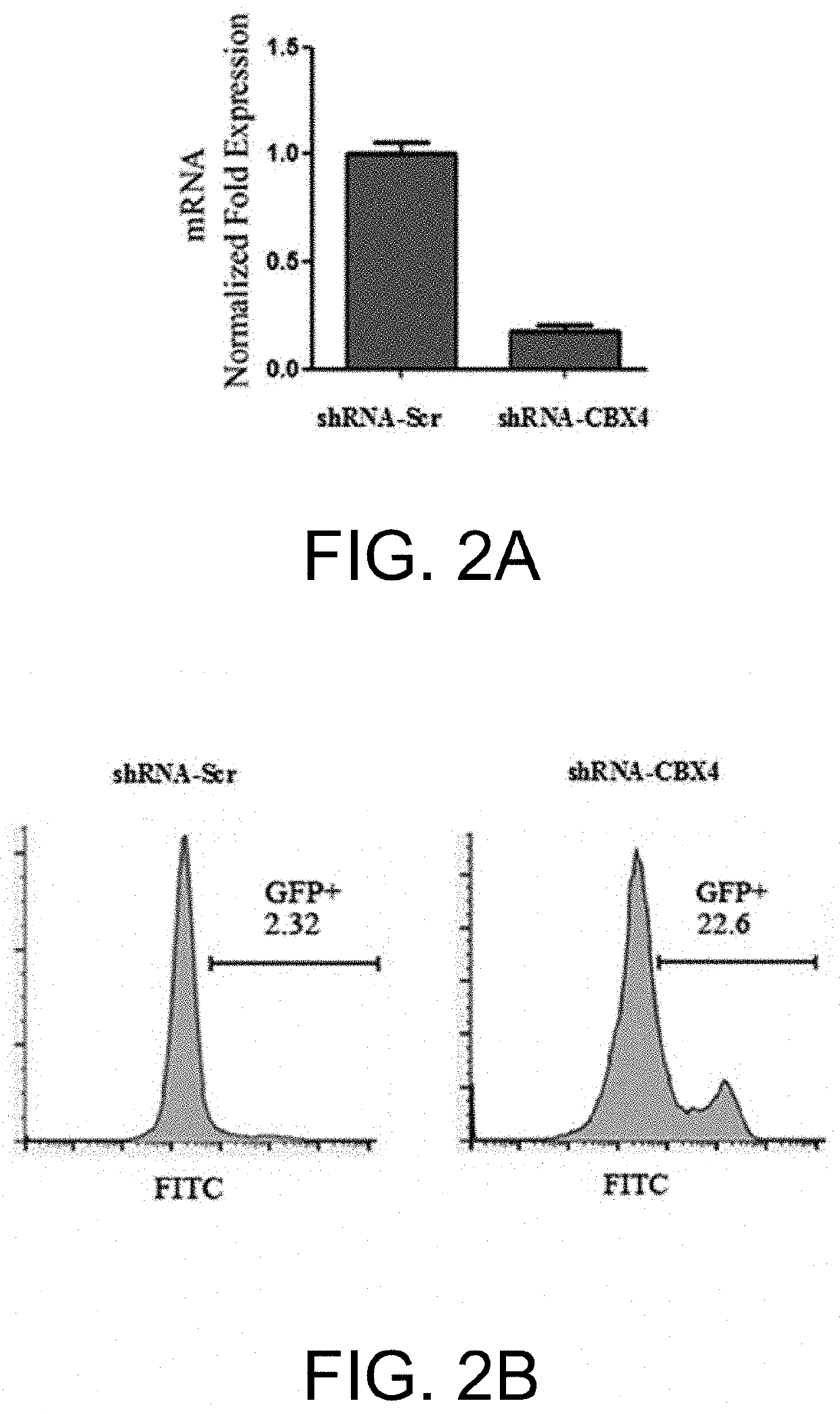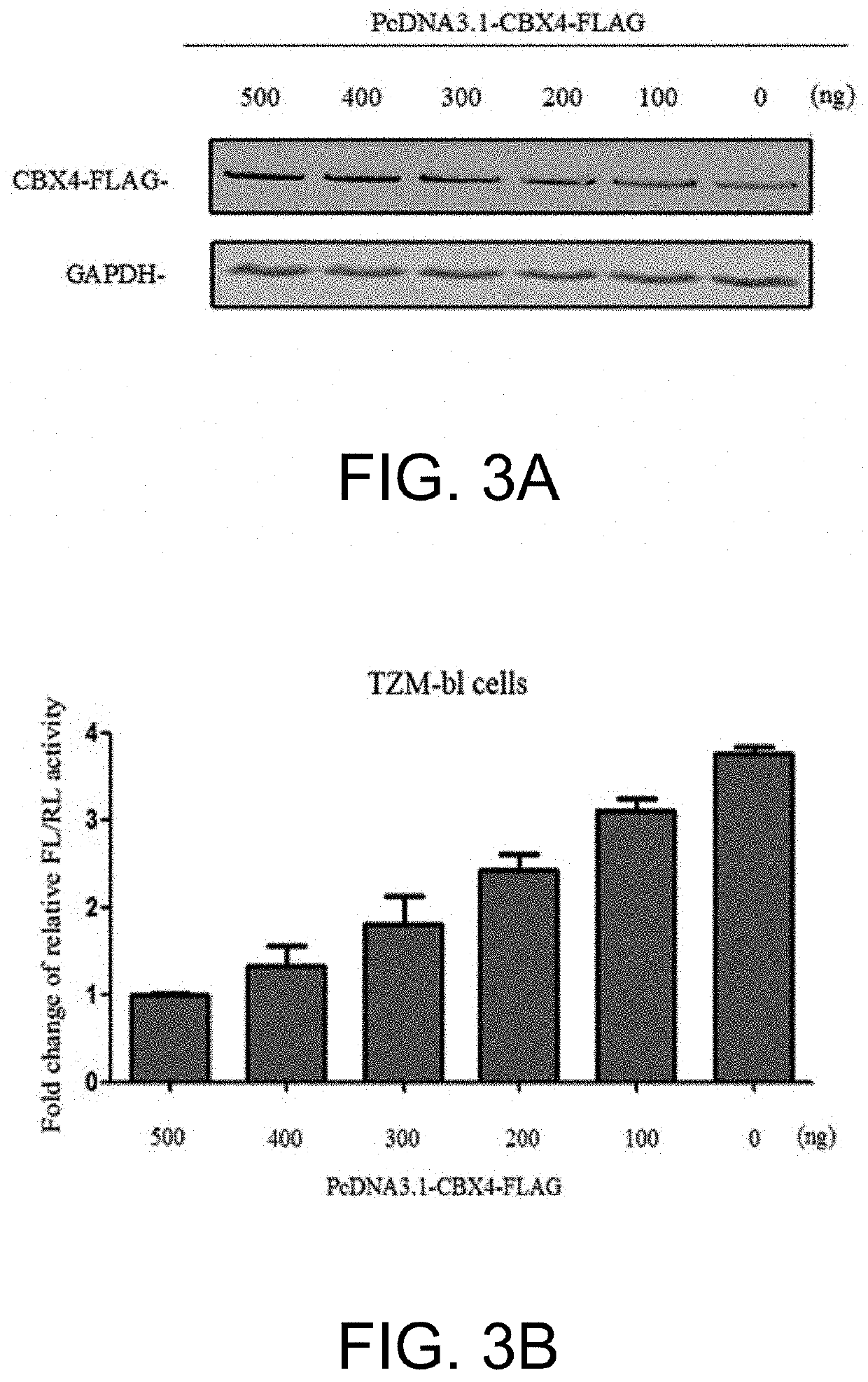Use of cbx4 as target for activation of hiv-1 latent infection
- Summary
- Abstract
- Description
- Claims
- Application Information
AI Technical Summary
Benefits of technology
Problems solved by technology
Method used
Image
Examples
embodiment 1
[0017]A knockdown of a CBX4 gene expression can effectively promote a transcriptional activity of LTR of HIV-1, and a specific experimental method is as follows:
[0018](1) well-grown TZM-bl cells were taken and inoculated in a 24 well-plate; and a medium used was a complete medium: high glucose DMEM, 10% fetal bovine serum and 1% double antibody, with a culture condition of 5% carbon dioxide, at 37° C.;
[0019](2) after 24 hours of adherence, a pcDNA3.1-Tat plasmid was co-transfected with siRNA-CBX4 or siRNA-NC respectively, and a culture was continued under the condition in (1);
[0020](3) after 48 hours, a cell pellet was collected, and a part of it was taken to extract RNA was by a Trizol method, and cDNA was reversed and obtained; a CBX4-specific Q-PCR primer was used to detect an expression level of mRNA of CBX4, and a knockdown efficiency of siRNA-CBX4 was determined;
[0021](4) the remaining cells were taken, and after a lysis, a method of dual fluorescein plum reporter gene assay w...
embodiment 2
[0024]Inhibition of CBX4 in J-lat 10.6 HIV-1 latent infection cells effectively activates a HIV-1 latent infection reservoir. A specific experimental method is as follows:
[0025](1) a specific base sequence was synthesized, shRNA and PLKO.1-CBX4 against CBX4 were constructed by annealing, and a sequencing was performed to confirm that the sequence was correct;
[0026](2) well-grown human kidney cell line 239T cells were taken and inoculated in a 10 cm flat bottom plate; and a medium used was a complete medium: high glucose DMEM, 10% fetal bovine serum and 1% double antibody, with a culture condition of 5% carbon dioxide, at 37° C.;
[0027](3) after 24 hours of adherence, PLKO.1-CBX4 or PLKO.1-NC and psPAX2, VSV-G were transfected into the cells, and a culture was continued under the condition in (2);
[0028](4) after 48 hours, a supernatant was collected, virus particles were concentrated by centrifugation using PEG-6000, and a virus P24 was detected using an ELISA P24 kit;
[0029](5) well-g...
embodiment 3
[0035]Overexpression of CBX4 protein in TZM-bl cells can inhibit a transcriptional activity of LTR of HIV-1. A specific experimental method is as follows:
[0036](1) a CBX4 cDNA plasmid template was ordered, an appropriate primer was designed, and a CBX4 overexpression plasmid, pcDNA3.1-CBX4-FLAG, was constructed;
[0037](2) well-grown TZM-bl cells were taken and paved in a 6-well transparent plate with 1×106 cells per well; a medium used was a complete medium: high glucose DMEM, 10% fetal bovine serum and 1% double antibody, with a culture condition of 5% carbon dioxide, at 37° C.;
[0038](3) after 24 hours of adherence, a plasmid pcDNA3.1-CBX4-FLAG was transfected, and a culture was continued under the condition in (2);
[0039](4) after 48 hours, the cells were collected and were lysed with a RIPA lysate, a CBX4 overexpression level was detected by western blot, to determine an effect of the overexpression plasmid pcDNA3.1-CBX4-FLAG;
[0040](5) the well-grown TZM-bl cells were taken and pav...
PUM
 Login to View More
Login to View More Abstract
Description
Claims
Application Information
 Login to View More
Login to View More - R&D
- Intellectual Property
- Life Sciences
- Materials
- Tech Scout
- Unparalleled Data Quality
- Higher Quality Content
- 60% Fewer Hallucinations
Browse by: Latest US Patents, China's latest patents, Technical Efficacy Thesaurus, Application Domain, Technology Topic, Popular Technical Reports.
© 2025 PatSnap. All rights reserved.Legal|Privacy policy|Modern Slavery Act Transparency Statement|Sitemap|About US| Contact US: help@patsnap.com



